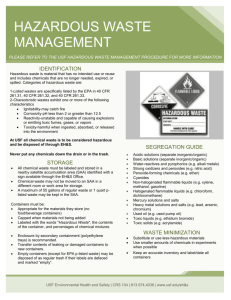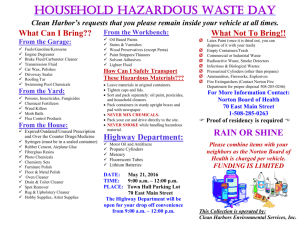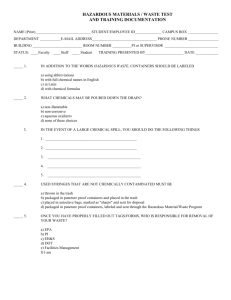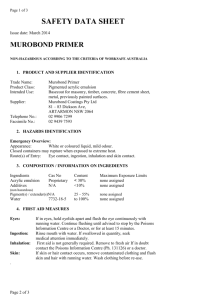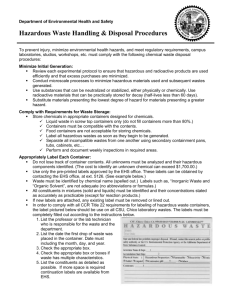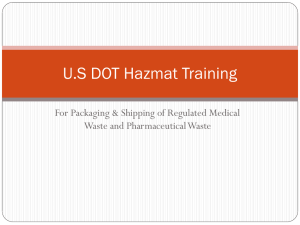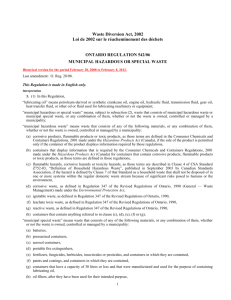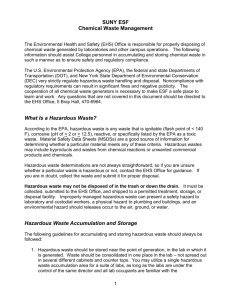Lab Self Audit Checklist
advertisement
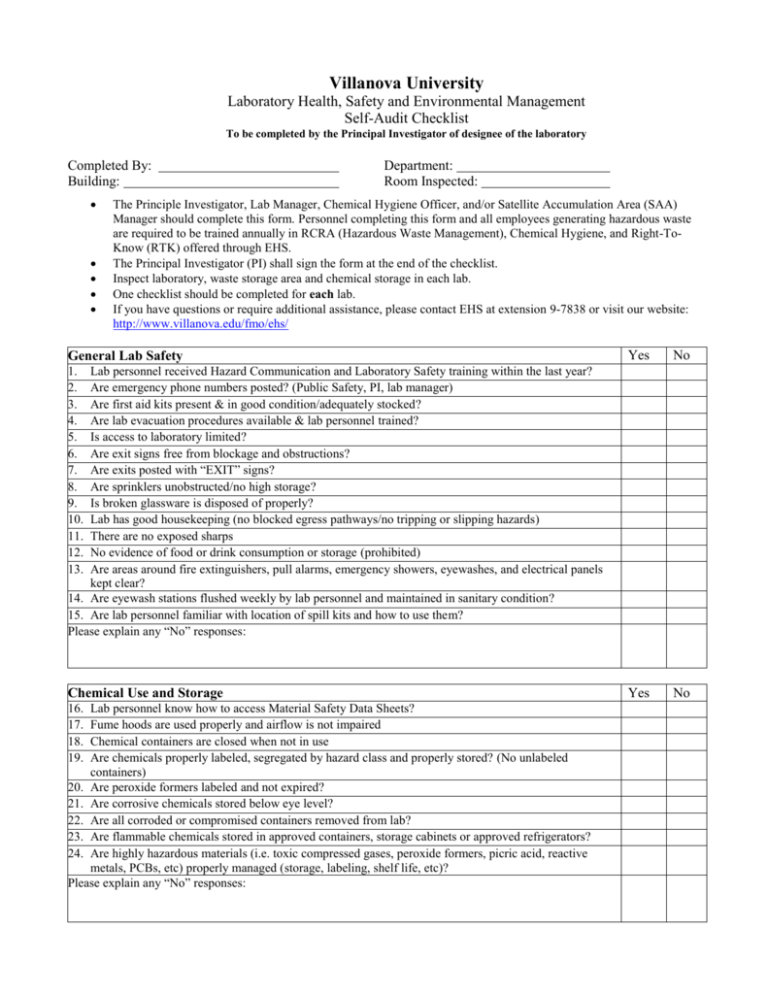
Villanova University Laboratory Health, Safety and Environmental Management Self-Audit Checklist To be completed by the Principal Investigator of designee of the laboratory Completed By: Building: Department: Room Inspected: The Principle Investigator, Lab Manager, Chemical Hygiene Officer, and/or Satellite Accumulation Area (SAA) Manager should complete this form. Personnel completing this form and all employees generating hazardous waste are required to be trained annually in RCRA (Hazardous Waste Management), Chemical Hygiene, and Right-ToKnow (RTK) offered through EHS. The Principal Investigator (PI) shall sign the form at the end of the checklist. Inspect laboratory, waste storage area and chemical storage in each lab. One checklist should be completed for each lab. If you have questions or require additional assistance, please contact EHS at extension 9-7838 or visit our website: http://www.villanova.edu/fmo/ehs/ General Lab Safety Yes No Yes No 1. 2. 3. 4. 5. 6. 7. 8. 9. 10. 11. 12. 13. Lab personnel received Hazard Communication and Laboratory Safety training within the last year? Are emergency phone numbers posted? (Public Safety, PI, lab manager) Are first aid kits present & in good condition/adequately stocked? Are lab evacuation procedures available & lab personnel trained? Is access to laboratory limited? Are exit signs free from blockage and obstructions? Are exits posted with “EXIT” signs? Are sprinklers unobstructed/no high storage? Is broken glassware is disposed of properly? Lab has good housekeeping (no blocked egress pathways/no tripping or slipping hazards) There are no exposed sharps No evidence of food or drink consumption or storage (prohibited) Are areas around fire extinguishers, pull alarms, emergency showers, eyewashes, and electrical panels kept clear? 14. Are eyewash stations flushed weekly by lab personnel and maintained in sanitary condition? 15. Are lab personnel familiar with location of spill kits and how to use them? Please explain any “No” responses: Chemical Use and Storage 16. 17. 18. 19. Lab personnel know how to access Material Safety Data Sheets? Fume hoods are used properly and airflow is not impaired Chemical containers are closed when not in use Are chemicals properly labeled, segregated by hazard class and properly stored? (No unlabeled containers) 20. Are peroxide formers labeled and not expired? 21. Are corrosive chemicals stored below eye level? 22. Are all corroded or compromised containers removed from lab? 23. Are flammable chemicals stored in approved containers, storage cabinets or approved refrigerators? 24. Are highly hazardous materials (i.e. toxic compressed gases, peroxide formers, picric acid, reactive metals, PCBs, etc) properly managed (storage, labeling, shelf life, etc)? Please explain any “No” responses: Waste Generation Yes No Yes No 25. Is the SAA (satellite accumulation area for waste) located at or near the point of waste generation? 26. Is the SAA under control of the operator of the process generating waste? 27. Are the containers of hazardous waste properly labeled with the Villanova University Hazardous Waste Label? 28. Are the chemical names (IUPAC) clearly marked on the label? Note: chemical formulas and acronyms such as EtOH or ACN are not acceptable. 29. Does the hazardous waste label have the concentrations marked for each constituent? Note: concentrations must add up to 100% when container is full 30. Is the contact information complete on the hazardous waste label? 31. All hazardous waste is less than 1 year old? Note: you cannot have waste in the lab for more than 1 year, contact EHS immediately if you locate old waste. 32. What is the total amount of hazardous waste currently stored in area? _________ 33. Are waste containers dated if greater than 55-gallons of hazardous waste or 1-quart of acutely hazardous waste is present? 34. If laboratory has reached accumulation limits (above), was EHS notified immediately? 35. Are all waste containers compatible with the waste they are holding? 36. If more than one waste stream is in a container are they compatible with each other? 37. Are waste containers in good condition, free of leaks, rust, bulging, etc.? 38. Are waste containers securely closed? (Is the proper cap/lid used, no funnels left in opening) 39. Are hazardous waste containers stored in secondary containment bins? 40. Are incompatible waste streams stored in separate containment bins, or by some other physical barrier (i.e. separate cabinet)? 41. Have obsolete chemicals (expired and potentially hazardous, inherited, no longer used, etc.) been properly disposed of? Please explain any “No” responses: Biological N/A 42. 43. 44. 45. Biosafety signs and labels are present? Biological Safety Cabinets are certified, current & used properly Adequate decontamination procedures are in place Disinfectants effective against the agents in use are available at all times within the areas where the biohazardous materials are handled or stored 46. Lab uses a sharps disposal container 47. All biological waste is disposed of in clearly marked red bags 48. Waste is kept to manageable level (not over full) Please explain any “No” responses: Principal Investigator: __________________________ Signature:__________________________ Date: _______
